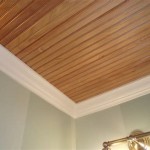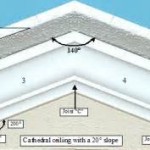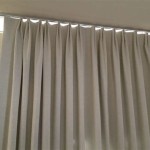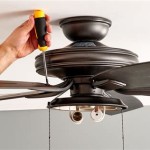What Are Suspended Ceiling Tiles Made Of?
Suspended ceiling tiles, also known as drop ceiling tiles, are a common feature in commercial, residential, and institutional buildings. Their popularity stems from their ability to conceal infrastructure elements like ductwork, piping, and wiring, while also offering acoustic control and aesthetic appeal. Understanding the composition of these tiles is crucial for selecting the appropriate material based on specific needs regarding fire resistance, acoustic performance, moisture resistance, and overall durability. The composition of suspended ceiling tiles impacts their performance characteristics and suitability for different applications.
Several materials are used in the manufacture of suspended ceiling tiles, each offering distinct advantages and disadvantages. The primary materials include mineral fiber, fiberglass, gypsum, metal, wood, and specialty composites. The choice of material significantly influences the tile's weight, fire rating, sound absorption coefficient, and resistance to humidity. Furthermore, manufacturing processes and surface treatments further augment these properties, tailoring them to specific environmental and functional requirements.
Mineral Fiber Ceiling Tiles
Mineral fiber ceiling tiles are among the most widely used options, particularly in commercial settings. These tiles are primarily composed of mineral wool, also known as rock wool or slag wool, combined with binding agents and recycled materials. The mineral wool itself is produced by melting rock, slag, or glass at high temperatures and then spinning or blowing the molten material into fine fibers. This process creates a lightweight and porous structure, which contributes significantly to the tile's acoustic properties.
The manufacturing process involves blending the mineral wool with starch, cellulose, or other binders, along with recycled paper and other additives. This mixture is then formed into sheets and cut into the desired tile dimensions. The tiles are subsequently dried and may be coated with a surface finish to enhance their appearance and durability. The surface finish can range from simple paint to more sophisticated coatings designed to improve stain resistance, cleanability, and light reflectance. Mineral fiber tiles are generally cost-effective and offer a good balance of performance characteristics. They are available in a variety of textures, patterns, and colors, making them a versatile choice for many applications.
The composition of mineral fiber tiles allows for good sound absorption, helping to reduce noise levels in interior spaces. This characteristic is particularly valuable in offices, schools, and other environments where noise control is essential. The porous structure of the mineral wool traps sound waves, preventing them from reflecting off the ceiling surface. In addition to acoustic benefits, mineral fiber tiles typically offer a good fire resistance rating, contributing to the overall safety of the building. They are also relatively easy to install and maintain, making them a practical choice for both new construction and renovation projects.
However, mineral fiber tiles can be susceptible to moisture damage if exposed to high humidity or water leaks. This can lead to sagging, staining, and even mold growth. To mitigate this risk, some mineral fiber tiles are treated with moisture-resistant coatings or are specifically designed for use in humid environments. It's crucial to select the appropriate type of mineral fiber tile based on the environmental conditions of the intended application.
Fiberglass Ceiling Tiles
Fiberglass ceiling tiles, similar to mineral fiber tiles, utilize glass fibers as their primary component. These fibers are typically made from molten glass that is spun into тонкие strands. The resulting fiberglass material is lightweight, strong, and inherently resistant to fire. Fiberglass tiles offer excellent acoustic performance and are often used in spaces where sound control is a priority, such as recording studios, theaters, and open-plan offices.
The manufacturing process involves bonding the fiberglass fibers together with a resin binder. The mixture is then formed into sheets and cut into the desired tile sizes. Fiberglass tiles may be faced with a variety of materials, including fabric, vinyl, or paint, to enhance their appearance and performance characteristics. The facing material can also provide additional acoustic benefits or improve the tile's resistance to moisture and stains.
Fiberglass tiles are known for their superior sound absorption capabilities. The fibrous structure of the material effectively traps sound waves, reducing reverberation and improving speech intelligibility. This makes them an ideal choice for environments where clear communication is essential. Furthermore, fiberglass tiles are inherently fire-resistant and do not readily support combustion. This contributes to the overall fire safety of the building and can help to slow the spread of flames in the event of a fire.
One potential drawback of fiberglass tiles is their susceptibility to fiber shedding if not properly handled. The release of small fiberglass particles into the air can cause skin and respiratory irritation. Therefore, it is important to follow proper handling procedures during installation and maintenance to minimize the risk of exposure. Additionally, fiberglass tiles can be more expensive than mineral fiber tiles, which may be a consideration for budget-conscious projects.
Despite these potential drawbacks, fiberglass tiles remain a popular choice for applications requiring high acoustic performance and fire resistance. Their durability and long lifespan also make them a cost-effective option in the long run. Careful selection and proper installation are key to maximizing the benefits of fiberglass ceiling tiles.
Gypsum Ceiling Tiles
Gypsum ceiling tiles are made from gypsum plaster, a naturally occurring mineral composed of calcium sulfate dihydrate. Gypsum is known for its fire-resistant properties and its ability to regulate humidity levels. Gypsum tiles are typically used in areas where fire safety is a primary concern, such as corridors, stairwells, and fire-rated assemblies. They also offer good sound attenuation and can contribute to a comfortable indoor environment.
The manufacturing process involves mixing gypsum plaster with water and additives to form a slurry. This slurry is then cast into molds to create the desired tile shapes and dimensions. The tiles are subsequently dried and may be reinforced with fiberglass or other materials to increase their strength and durability. Gypsum tiles are often faced with a decorative paper or vinyl layer to enhance their appearance and provide additional protection. Some gypsum tiles are also perforated to improve their acoustic performance.
The primary advantage of gypsum tiles is their inherent fire resistance. Gypsum contains chemically bound water, which is released as steam when exposed to high temperatures. This steam acts as a fire retardant, helping to cool the surrounding area and slow the spread of flames. Gypsum tiles can provide a significant level of fire protection, giving occupants more time to evacuate in the event of a fire.
In addition to fire resistance, gypsum tiles also offer good sound attenuation. The dense material helps to block sound transmission, reducing noise levels between rooms. This can be particularly beneficial in multi-family dwellings or commercial buildings where privacy is important. Gypsum tiles are also relatively easy to install and maintain, making them a practical choice for a variety of applications.
However, gypsum tiles can be susceptible to damage from moisture. Prolonged exposure to high humidity or water leaks can cause the tiles to swell, crack, or even crumble. Therefore, it is important to avoid using gypsum tiles in areas where moisture is a concern. Furthermore, gypsum tiles can be heavier than mineral fiber or fiberglass tiles, which may require a more robust suspension system. Proper installation and maintenance are essential to ensure the longevity and performance of gypsum ceiling tiles.
Other materials used for suspended ceiling tiles include metal, wood and specialty composites tailored for specific performance characteristics, from high impact resistance to unique aesthetic qualities. The choice of material will always depend on the unique requirements of the intended space.

What Are Suspended Ceiling Tiles Made From

What Are Ceiling Tiles Materials Granmore Ceilings

What Are Suspended Ceiling Tiles Made From

What Are Ceiling Tiles Made Of Suspended Materials

Suspended Ceiling Tiles Guide Types Installation And Cleaning

Types Of Suspended Ceilings Acoustic Ceiling Tiles

Ceiling Tiles By Material

Mineral Fiber Acoustical Suspended Ceiling Tiles Panel Acoustic Fibre Made In China Com

Mineral Fiber Suspended Ceiling Ceilings Armstrong Residential

What Are The Types Of Suspended Acoustic Ceilings 9wood
Related Posts








